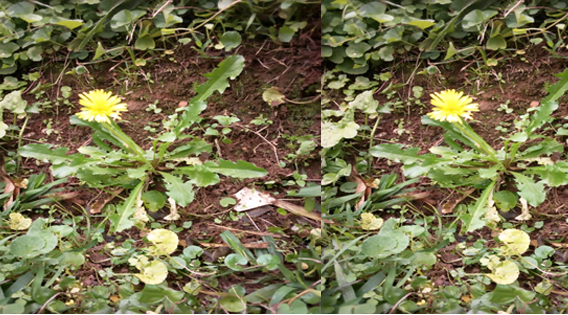Scientific Name :Taraxacum officinale Vernacular Name :Pissenlit or Dent-de-lion Family name :Asteraceae Geographic Distribution :Lawns, roadsides, disturbed banks and shores of water ways and other ares with moist soils, 1800-2000 m
Botanical Description Taraxacum officinale is a flowering herbaceous perennial plant. It grows from an unbranched taperoots and produce one to more than ten stems that are typically 5-40 cm tall. The stems can be tinted purplish, they are upright or lax, and produce flower heads that are held as tall or taller than the foliage. The foliage may be upright growing or horizontally spreadind, the leaves have petioles that are either winged or narrowly winged. The stems can be glabrous, or sparsely covered with short hairs. Plants have milky latex and the leaves are all basal, each flowering stemm lacks bracts and one single flower head. The yellow flower heads lack receptacle bracts and all the florets, are ligulate and bisexual. The leaves are 5-45 cm long and 1-10 cm wide and are oblanceolate, oblong, or obovate in shape, with the base gradually narrowing to the petiole. The leaf margins are typically shallowly lobed to deeply lobed and often laThe leaf margins are typically shallowly lobed to deeply lobed and often lacerate or toothed with sharp or dull teeth. The florets 40 to over 100 per head. Heaving corollas that are yellow or orane yellow in color. The fruits are cypselae
Medicinal Use The dried root once used as a tonic, (a substance with medicinal properties intended to restore or invigorate).
Aperient, cholagogue, depurative, diuretic, hypoglycaemic, laxative, stomachic, tonic and wart. Empiric traditional application to treat digestive disorders, health promoting properties of either dandelionextract from leaves or roots are anti-inflammatory, anti-caricinogenic, and anti-oxidative activities
Other Use Compost, cosmetic, dye, fruit, ripening, latex and miscellany, the flowers are used to make dandelion wine. The leaves are eaten

